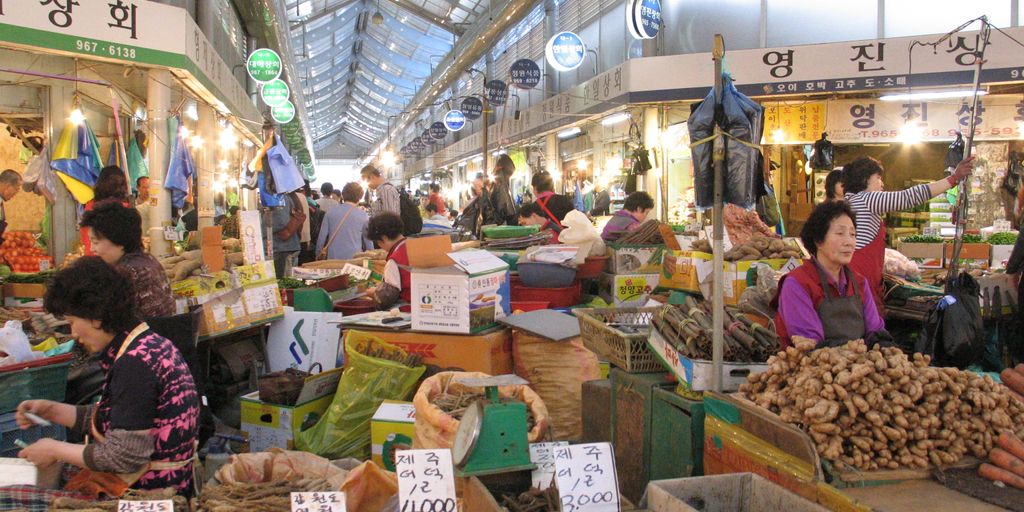Korea Bound: Your Passport to Adventure is your ultimate guide to exploring the vibrant and diverse landscapes of South Korea. From the bustling streets of Seoul to the serene temples of Gyeongju, this article will take you on a journey through the heart of Korean culture, cuisine, and history. Whether you’re a seasoned traveler or planning your first trip, get ready to immerse yourself in the rich traditions and modern marvels that make Korea a must-visit destination.
Key Takeaways
- Seoul offers a perfect blend of historic palaces, modern skyscrapers, and vibrant street markets.
- Understanding Korean cultural etiquette is essential for a respectful and enjoyable trip.
- South Korea boasts stunning natural landscapes, including Jeju Island and Seoraksan National Park.
- Korean cuisine is a culinary adventure with must-try dishes and delightful street food.
- Navigating Korea is made easy with an efficient transportation system, including subways, high-speed trains, and buses.
Exploring Seoul: The Heart of South Korea
Seoul, the capital of South Korea, is a city that beautifully blends the old with the new. By day you can visit the city’s 5 Palaces and witness the Royal Guard Changing Ceremony, wander the alleys of the 600-year-old Bukchon Hanok Village, and explore the trails of Bukhansan National Park. By night, feast on a traditional Korean BBQ, indulge in a few cocktails unique to Korea, and then head to the bright lights of Gangnam.
Historic Palaces and Temples
Seoul is home to several historic palaces and temples that offer a glimpse into Korea’s rich history. Gyeongbokgung Palace, the largest of the Five Grand Palaces, is a must-visit. Nearby, the Jogyesa Temple provides a serene escape from the bustling city.
Modern Marvels and Skyscrapers
The cityscape of Seoul is dotted with modern marvels and skyscrapers. The Lotte World Tower, one of the tallest buildings in the world, offers breathtaking views of the city. Digital Media City and the Gangnam district are also worth exploring for their futuristic architecture and vibrant atmosphere.
Vibrant Markets and Street Food
Seoul’s markets are a feast for the senses. Visit Gwangjang Market for an authentic street food experience, where you can try dishes like bindaetteok (mung bean pancakes) and tteokbokki (spicy rice cakes). Myeong-dong district is another popular spot, known for its bustling streets and diverse food stalls.
Cultural Etiquette: Do’s and Don’ts in Korea
Understanding cultural etiquette in Korea is essential for a smooth and respectful visit. Here are some key points to keep in mind:
Dining Etiquette
When dining in Korea, it’s important to follow certain customs. Always wait for the eldest person to start eating before you begin. It’s also polite to pour drinks for others rather than yourself. Remember to use both hands when receiving or giving something to show respect.
Social Customs
Koreans value respect and hierarchy. Bowing is a common way to greet someone, especially elders. When addressing someone, use their title and last name unless invited to use their first name. Public displays of affection are generally frowned upon, so it’s best to keep interactions modest in public spaces.
Traditional Attire
Traditional Korean attire, known as hanbok, is often worn during festivals and celebrations. If you have the opportunity to wear a hanbok, make sure to handle it with care and respect. The intricate designs and vibrant colors are a significant part of Korean culture.
By understanding and respecting these cultural norms, you can ensure a more enriching and enjoyable experience in Korea.
Natural Wonders: Korea’s Stunning Landscapes
Jeju Island’s Volcanic Beauty
Jeju Island is a must-visit destination for nature lovers. The island is famous for its volcanic landscapes and unique rock formations. Visitors can explore the stunning Hallasan Mountain, which is a dormant volcano and the highest peak in South Korea. Don’t miss the beautiful waterfalls and lava tubes that add to the island’s charm.
The Serene Temples of Gyeongju
Gyeongju, often referred to as a "museum without walls," is home to many ancient temples and historical sites. The Bulguksa Temple and Seokguram Grotto are UNESCO World Heritage Sites that offer a glimpse into Korea’s rich cultural heritage. The peaceful surroundings and intricate architecture make these temples a perfect spot for reflection and relaxation.
Hiking in Seoraksan National Park
Seoraksan National Park is a paradise for hikers and outdoor enthusiasts. The park features rugged mountain peaks, lush forests, and clear streams. Popular trails include the hike to Ulsanbawi Rock and the trek to the summit of Daecheongbong Peak. The park is especially beautiful in the fall when the leaves change color, creating a breathtaking landscape.
Discover the natural beauty and cultural treasures of what the Korean Peninsula has to offer!
Korean Cuisine: A Culinary Adventure

Must-Try Dishes
Korean cuisine is a delightful journey for your taste buds. Some must-try dishes include Kimchi, a spicy fermented cabbage, and Bibimbap, a mixed rice dish with vegetables and meat. Don’t forget to try Bulgogi, which is marinated beef, and Japchae, a sweet potato noodle dish.
Street Food Delights
Korea’s street food scene is vibrant and diverse. You can find Tteokbokki, spicy rice cakes, and Hotteok, sweet pancakes filled with brown sugar and nuts. For seafood lovers, Eomuk (fish cakes) is a must-try. The best way to experience these delights is to book now!
Traditional Tea Houses
Traditional tea houses in Korea offer a serene escape from the bustling city life. Here, you can enjoy a variety of traditional teas like Omija-cha (five-flavor tea) and Nokcha (green tea). These tea houses often serve traditional snacks like Tteok (rice cakes) and Yakgwa (honey cookies).
Visiting a traditional tea house is a peaceful way to immerse yourself in Korean culture and enjoy some quiet time.
Festivals and Celebrations: Experiencing Korean Culture
Lunar New Year
Lunar New Year, or Seollal, is one of the most important holidays in Korea. Families gather to honor their ancestors and enjoy traditional foods like tteokguk (rice cake soup). It’s a time for family bonding and cultural rituals.
Chuseok Harvest Festival
Chuseok, often referred to as Korean Thanksgiving, is a celebration of the harvest. Families come together to share a feast and pay respects to their ancestors. Traditional games and dances are also part of the festivities.
Boryeong Mud Festival
The Boryeong Mud Festival is a unique and fun event where people of all ages can enjoy mud-related activities. From mud wrestling to mud slides, it’s a messy but exhilarating experience. The festival also features live music and fireworks.
The Boryeong Mud Festival is a must-visit for anyone looking to experience a different side of Korean culture.
Navigating Korea: Transportation Tips
Getting around Korea is easy and convenient with various transportation options available. Whether you’re exploring the bustling streets of Seoul or venturing out to the serene countryside, you’ll find a mode of transport that suits your needs.
Using the Subway System
The subway system in Korea is one of the most efficient and affordable ways to travel. With extensive networks in major cities like Seoul and Busan, you can reach almost any destination quickly. Make sure to get a T-money card for seamless travel across different modes of public transport.
High-Speed Trains
Korea’s high-speed trains, known as KTX, are perfect for long-distance travel. They connect major cities and offer a comfortable and fast journey. For instance, you can travel from Seoul to Busan in just under three hours. The trains are equipped with modern amenities to ensure a pleasant trip.
Buses and Taxis
Buses and taxis are also widely available and provide flexible travel options. Buses are a cost-effective way to explore both urban and rural areas. Taxis, on the other hand, offer a more private and direct route to your destination. For budget-friendly stays, consider accommodations like oneway guesthouse in Busan, which offers affordable comfort and facilities like a common area and laundry service.
Historical Sites: A Journey Through Time
The Demilitarized Zone (DMZ) is a unique area that separates North and South Korea. It is one of the most heavily fortified borders in the world. Visitors can explore the Joint Security Area (JSA), where negotiations between the two Koreas take place. The DMZ offers a rare glimpse into the ongoing conflict and hopes for peace.
Gyeongju, known as the "museum without walls," is home to numerous ancient tombs and relics. This historic town is packed with traditional architecture, tombs, temples, rock carvings, and crumbling palaces. Highlights include the Gyeongju Yangdong Village and the Seokguram temple, which houses a grotto of a “Smiling Buddha.”
Korea’s war memorials and museums provide a deep dive into the country’s tumultuous history. The War Memorial of Korea in Seoul is a must-visit, offering extensive exhibits on the Korean War and other significant conflicts. These sites honor the sacrifices made and educate visitors on the importance of peace.
Shopping in Korea: From Malls to Markets
Shopping in Korea is an adventure that offers a mix of luxury and traditional experiences. Whether you’re looking for high-end brands or unique souvenirs, Korea has it all.
Conclusion
Embarking on a journey to South Korea is more than just a trip; it’s an adventure filled with rich history, vibrant culture, and breathtaking landscapes. From the bustling streets of Seoul to the serene beauty of Jeju Island, every corner of this fascinating country offers something unique and memorable. Whether you’re exploring ancient palaces, savoring delicious Korean cuisine, or experiencing the warmth of local hospitality, South Korea promises an unforgettable experience. So pack your bags, grab your passport, and get ready to create lasting memories in the Land of the Morning Calm. Your adventure awaits!
Frequently Asked Questions
What is the best time to visit South Korea?
The best time to visit South Korea is during the spring (April to June) and autumn (September to November) when the weather is mild and pleasant.
Do I need a visa to travel to South Korea?
Visa requirements for South Korea vary depending on your nationality. Many countries have visa-free entry for short stays. It’s best to check with the South Korean embassy or consulate in your country.
What are some must-try dishes in Korean cuisine?
Some must-try dishes include Kimchi, Bibimbap, Bulgogi, and Korean BBQ. Don’t forget to try street food like Tteokbokki and Hotteok.
Is it easy to get around South Korea using public transportation?
Yes, South Korea has an efficient and extensive public transportation system, including subways, buses, and high-speed trains. Navigating the country is relatively easy for tourists.
What cultural etiquette should I be aware of when visiting South Korea?
When visiting South Korea, it’s important to be aware of dining etiquette, such as using chopsticks properly, and social customs like bowing when greeting. Additionally, showing respect for elders is highly valued.
What are some popular festivals in South Korea?
Popular festivals in South Korea include the Lunar New Year, Chuseok Harvest Festival, and the Boryeong Mud Festival. These events offer unique cultural experiences and are celebrated with great enthusiasm.

